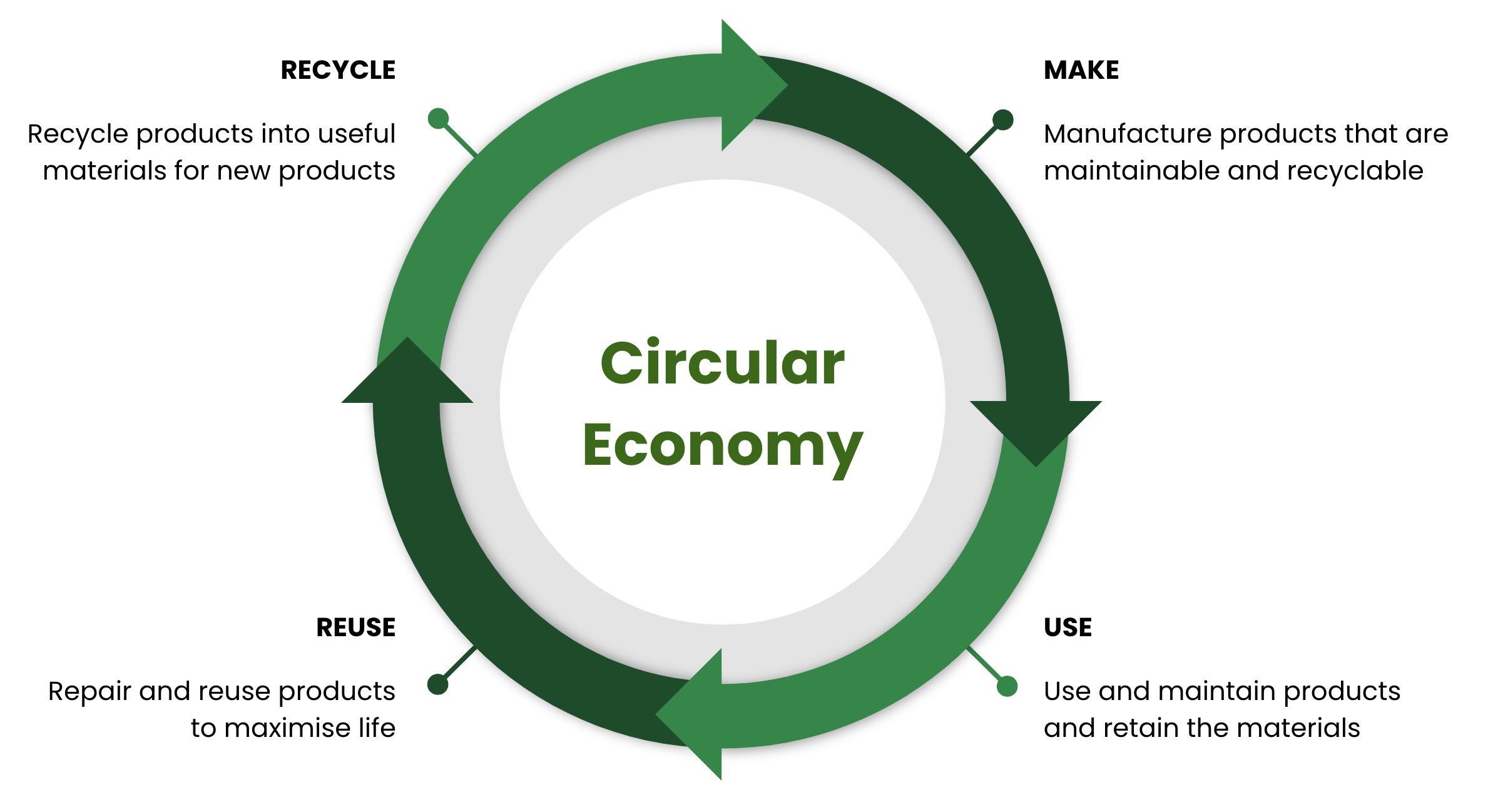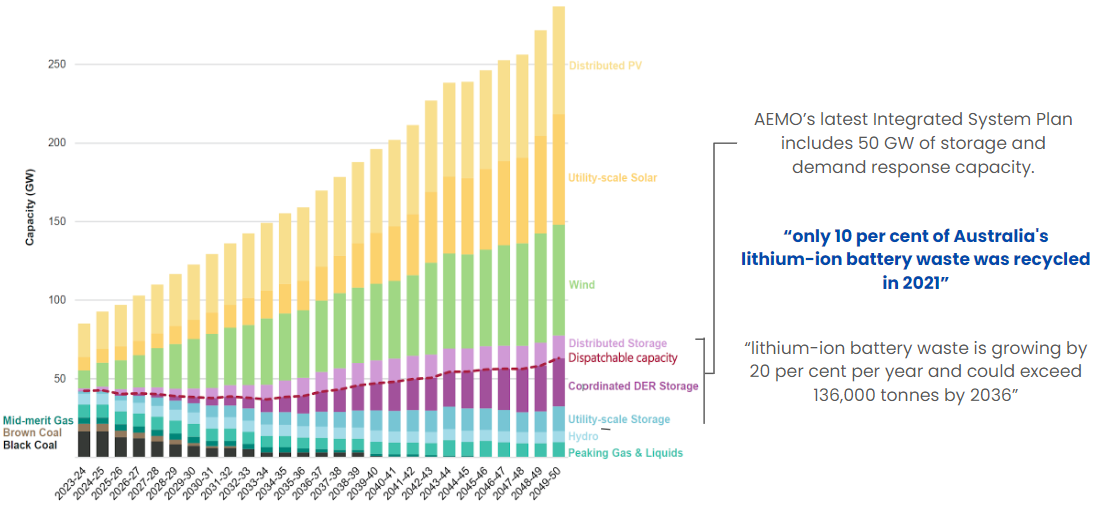Want to go straight to the webinar? Click here.
We humans consume an almost unfathomable amount of energy. Until recently, we burned solids, liquids and gases that release heat and emissions without a care. This abundant source of energy has been the basis of human progress for over 200 years. But as the energy transition builds momentum, we are quickly realizing that quantities of renewables and storage may exceed the earth's inventory of minerals and we might need alternatives.
Concern about the limits of the earth's mineral resources is not a new subject. Over time, resource extraction methods have improved and previously uneconomic mineral deposits have been exploited.
But the energy transition is occurring as part of a broader societal change. People actually care about the planet, and they want to protect and sustain it. The mantra of reduce, reuse, and recycle has been around for decades. Now we encapsulate that in the concept of the Circular Economy that includes the entire lifecycle of goods and products.

So what does this have to do with energy storage?
Well, presently the dominant form of stationary energy storage for electricity (and also batteries for consumer devices and electric vehicles) are lithium-ion (Li-ion) batteries. We love Li-ion batteries here at BatNav. But as with any technology, there are some downsides and the potential for unintended consequences. (We will discuss these more in the future.)
And as the figure below shows, we will need increasing amounts of energy storage in the future. In Australia, AEMO is projecting, in its integrated system plan, a capacity of 50 gigawatts of storage and demand response (and that's not mentioning the GWh). Apparently, only 10% of Australians' lithium-ion waste is recycled, and over the next 15 years, we'll see a growth of 20% per year of waste which could exceed 136,000 tonnes. This data is probably based on consumer devices but does suggest that recycling Li-ion is not as cheap and accessible as we need it to be.

https://aemo.com.au/energy-systems/major-publications/integrated-system-plan-isp/2022-integrated-system-plan-isp | https://www.csiro.au/en/research/technology-space/energy/energy-storage/battery-recycling | Zhao, Yanyan; Ruether, Thomas; Bhatt, Anand; Staines, Jo. Australian Landscape for Lithium Ion Battery Recycling and Reuse in 2020 - Current Status | Gap Analysis and Industry Perspectives. CSIRO and FBI CRC: CSIRO and FBI CRC; 2021. https://doi.org/10.25919/91ap-m622
But if we need storage for renewables, what are the alternatives?
As it happens, there are alternatives to Li-ion. They have pros and cons but in the right application, they are equal or superior to Li-ion on cost and performance.
Since the industrial revolution, humans have relied on the stored chemical energy of coal and petroleum. Millions of years ago, plants and animals (i.e. collections of chemical molecules) were trapped in sediment, and with geological movement and pressure, were converted into the stuff we burn today. The chemical energy is released as heat energy and humans convert the heat energy to electrical energy (sometimes with steam in the process).
But energy is stored in many other forms such as kinetic, potential, electrochemical, and thermal energy. One of the forms of potential energy is gravity-based energy storage.
The most well-known version of gravity-based energy storage is pumped hydroelectric systems. A dense liquid such as water is raised above the surface of the earth by pumps. The potential energy of the liquids increases. Then to reclaim the energy, the water is allowed to flow through a turbine below the reservoir and the stored potential energy is turned into kinetic energy in the turbine that spins a generator that makes electrical energy (i.e. electricity). Viola!
The same principle applies to solids. Use excess electricity to lift a solid. Hold the solid at a height to store the energy. Reclaim the energy by lowering the solid which drives an electric motor that generates electricity.
The concept has been most famously demonstrated by Energy Vault and publicized with a US$235 million capital raise, merger with a SPAC (Novus Capital Corporation II), and listing on the New York Stock Exchange.
 The EVx energy storage tower lifts composite blocks with electric motors. Image: Energy Vault
The EVx energy storage tower lifts composite blocks with electric motors. Image: Energy Vault
But can we store energy without the towers and cranes?
As it happens, yes. Mark Swinnerton, Chief Executive Officer of Green Gravity, joined BatNav for our first webinar in our Energy Storage Supplier webinar series. Mark tells us about Green Gravity's plan to use unused, legacy mineshafts to raise and lower solid masses for energy storage.
 Green Gravity team. Image: Green Gravity.
Green Gravity team. Image: Green Gravity.
By using legacy infrastructure, without a reliance on critical minerals or toxic chemicals, Green Gravity flexes its sustainability and circular economy credentials.
Sure, but how many mineshafts are available for use?
Surprisingly, quite a lot. There are several hundreds of legacy, unused mineshafts located across Australia alone. Internationally, there may be thousands.
OK, but they are in the middle of nowhere!
Well, that's kind of true but they are typically located with a grid connection and a substantial load i.e. mining and minerals processing operations. Legacy mineshafts were once active mineshafts and required a grid connection to operate electric motors that raised and lowered humans and materials. And they are also located in regions with existing mining activity that can consume large amounts of electricity.
 Australian Mines Atlas (ga.gov.au). Mines: red=operating, green=historic, Grey=care & maintenance, yellow=major resource
Australian Mines Atlas (ga.gov.au). Mines: red=operating, green=historic, Grey=care & maintenance, yellow=major resource
Green Gravity is an example of smart people using existing infrastructure and some lateral thinking to deliver a sustainable and circular economy solution to fuel the energy transition.
You can check out the full webinar on Green Gravity on YouTube here.
Follow us on Linkedin for notice about early access to our next webinar or subscribe to our YouTube channel.
Want to know more about BatNav's technology? Click here.